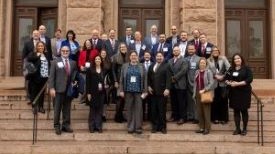It is Time to Plan for QOF Deferred Gain Recognition
By Janet C. Hagy, CPA-Austin
TXCPA Federal Tax Policy Blog
February 25, 2025
It is hard to believe that Dec. 31, 2026, is soon upon us. That is the date that the taxes on capital and Section 1231 gains that were deferred in prior years by investing in Qualified Opportunity Zone Property (QOZP) and Opportunity Zone Funds (QOF) must be reported if no inclusion event has previously occurred. Congressional intent was to encourage development in economically distressed locations known as Qualified Opportunity Zones (QOZ) and it appears to have been successful in many areas. However, so far, some investments have not performed as expected. Tax planning is needed to prepare taxpayers for the 2026 gain recognition and possible early dispositions of investments in QOF.
Beginning in April 2018, many taxpayers took advantage of the opportunity to defer tax to 2026 by investing their gains in QOZF. The rules were quite simple. Invest the amount of any capital or Section 1231 gain in qualified property, make the election to defer and the tax on the gain is deferred until Dec. 31, 2026. And, if certain holding periods are met, basis would be increased by 10% of the deferred gain if held at least five years, plus an additional 5% if held at least seven years. After recognizing the deferred gain in 2026, permanent exclusion from tax of any additional gain is awarded for property held at least 10 years by making an election to increase the basis in the property to the fair market value (FMV) on the date of sale or disposition. Most investors probably originally intended to hold the investment for at least 10 years to maximize the tax benefits. However, with the passing of time, early disposition or transfer may be desired.
Reasons for early disposition of the QOZP or QOF could include liquidity needs, gifts, divorce, pre-mortem planning, fluctuations in taxable income between 2025 and 2026, and, of course, projected further erosion of invested capital.
The first step in tax planning for a disposition is to determine the FMV of the investment. QOFs are not publicly traded, and most have restrictive covenants regarding sales and redemptions by investors. Therefore, the taxpayer will need to provide the operating agreement and the FMV. The amount invested as a deferred gain has a beginning basis of zero. Other statutory basis adjustments over the holding period, including the five- and seven-year holding period basis increases, must be considered in computing the adjusted basis. The taxable gain upon disposition or inclusion event is the difference between the lower of the deferred gain or the FMV of the QOF, and the adjusted basis.
Liquidity needs and gifting are less likely to occur given the known restrictive nature at the time of the original investment. Any sale, transfer or redemption causes income to be recognized in the year of disposition.
Unlike other Section 1041 transfers of property between spouses or incident to divorce, transfers of QOFs are inclusion events requiring recognition of gain by the transferor. In addition, the transferee’s property is no longer a qualifying QOF investment. In community property states, ownership status must be considered under state law.
Pre-mortem planning is essential. Death is not an event requiring inclusion of the deferred gain by the decedent. If the property transfers by bequest, the gain is considered income in respect of decedent to be recognized by the beneficiary. There is no step-up in basis. Sale of the QOF prior to death may be desirable if the investment has dramatically changed in value and/or the owner does not wish to burden the beneficiary with tax on the deferred gain. If there are multiple beneficiaries and some would not share in the QOF bequest, valuation of the QOF for purposes of equitable distributions to the beneficiaries seems problematic and subject to dispute. Special attention should be given if the owner has a charitable organization as a residual beneficiary.
Due to the political climate in Washington, tax planning for 2025-2026 and beyond is a challenge. But a case can be made to accelerate recognition of the deferred gain to 2025 if income in 2026 is expected to be significantly higher or there are passive activity losses that could be recognized in 2025 to offset significant passive income in 2025. Consideration must also be given to the acquisition dates and the opportunity for basis increases due to holding the QOF for at least five or at least seven years.
Failure to properly elect gain deferral can be corrected by filing amended returns for applicable years and including a completed election on Form 8997 . Forms 8997 and 8949 are used to report dispositions and transfers.
After Dec. 31, 2025, it will be too late to use multiple year planning techniques. Now is the time to talk to your clients about their deferred gains and planning opportunities.


